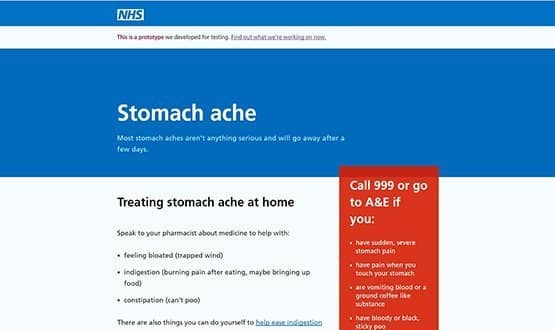The government is hoping to bring digitally disruptive services in-house through its revamped NHS.uk website.
Speaking at King’s Fund event on Thursday, Dan Sheldon, digital strategy lead at the Department of Health, said the site will allow the NHS to dictate if and how it is “going to get Ubered”.
A beta version of NHS.uk is scheduled to launch in spring 2017 as the successor to the NHS Choices website and will host a wider array of patient services.
Sheldon said while the NHS has been busy going paperless and automating, companies such as Netflix and Uber have been raising consumer expectations for convenient digital-based services.
“If we’re not careful, the standards will have been set without the NHS having been part of the conversation about the standards of personal health records.”
It comes as private companies increasingly provide convenient digital healthcare services outside the NHS system for those that afford to pay.
This has largely taken place in the GP space, with companies such as Push Doctor and GP Now provide video clinical consultations via a mobile app. But many are ambitious, hoping to provide national or global services.
“We don’t just want to work with individual practices at this point, because we don’t believe it’s the ultimate solution. The ultimate solution is the 111 level,” said Lee Dentith, founder of the NowHealthcare Group behind GP Now.
Effort are being made to better regulate these digital services, and some might eventually be available through NHS portals, such as NHS.uk.
NHS.uk will have a fuller range of online patient services than NHS Choices, including the ability to register with a GP, see and book appointments and e-prescriptions.
The NHS.uk team celebrated its first birthday in September, and during the year they have created seven prototypes and ten pages of content. In April, the site moved to its ‘beta’ phase, although it is unclear how this differs from the launch planned next year.
Some of the prototypes are published online, including a GP registration prototype, diabetes prototype and symptoms and conditions pages.
The site is designed to provide a more user friendly portal into the 30,000 NHS web pages out there.
At the Health and Social Care Expo in Manchester last month, health secretary Jeremy Hunt said NHS.uk would be the gateway to a new “instant access” personal health record, and would be modelled on the “blue button” service in the US.
Hunt also re-announced the addition of NHS 111 online triage service accessed through NHS.uk.
However, the rebranding of NHS Choices as NHS.uk actually occurred back in June 2015.
NHS.uk has blogged about the issues with accessing GP data, detailing concerns with data quality and accessibility, and online identify verification solutions. The suggested solution is to “embrace registers” and create three open and free bodies:
* A register of all practitioners allowed to practice, controlled by General Medical Council
* A register of all GP practices, governed by Organisation Data Service
* A register of practitioners prescribing at practices, cared for by the NHS Prescription Service
When Digital Health News questioned Sheldon further on patient access through NHS.uk, he added: “we need to move towards patients having more control of their own data, and that data following them across the system”.
NHS.uk is being created under a national framework that is outlined in the Personalised Health and Care Framework 2020, published November 2014, that set out plans for the site to become a “single point of access” for citizens wanting to use an NHS service.
A Department of Health spokesperson said in a statement that Hunt has “made clear the government’s commitment to delivering a number of digital programmes from the end of next year”.
“We are working alongside clinicians and patients to take these projects forward and will provide further details as this important work progresses.”
Sheldon also added that NHS.uk should “join the dots” in helping people understanding how the NHS is organised.

